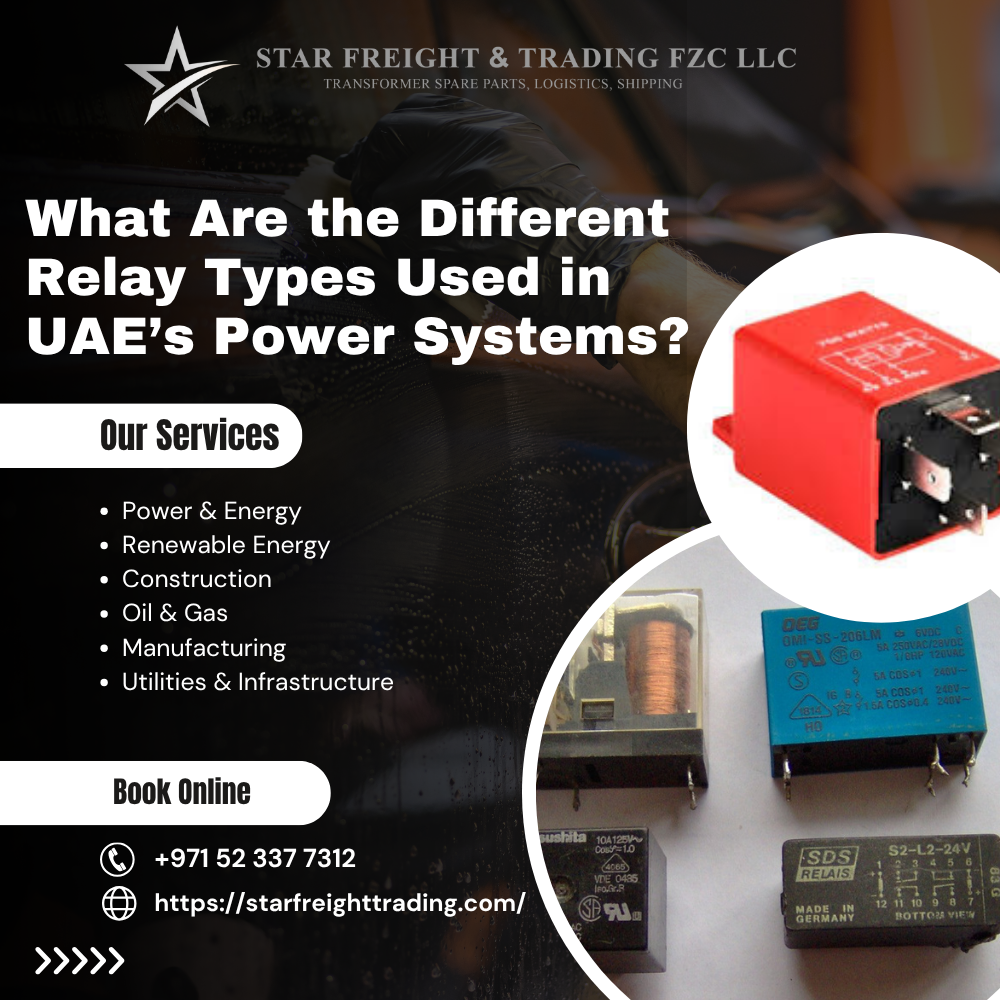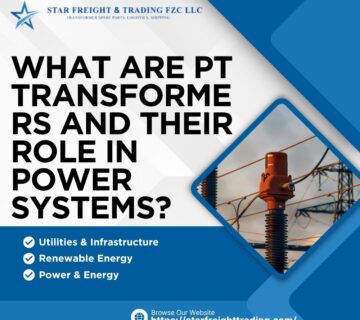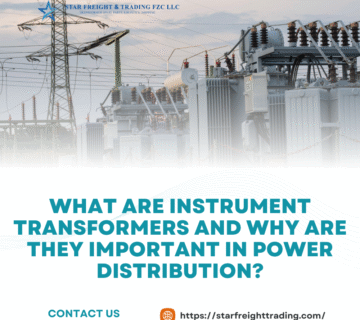In the UAE’s rapidly growing energy sector, reliability and safety are critical. From high-voltage transmission lines to industrial switchgear, protective relays play an essential role in ensuring electrical systems operate safely and efficiently.
Relays are more than just switches. They are the brains behind protection systems, detecting faults and triggering circuit breakers before equipment is damaged or service is interrupted. In this article, we’ll explore the different relay type used in UAE power systems, their applications, and how companies like Star Freight Trading supply and support these devices.
What Is a Relay in Power Systems?
A relay is an electrically operated device that detects abnormal electrical conditions and initiates a control action, such as opening a circuit breaker. In power systems, relays are primarily used for protection, monitoring, and control.
In modern UAE networks, relays are essential for:
-
Fault detection – Identifying short circuits, overloads, and ground faults.
-
Isolation – Disconnecting faulty sections to prevent damage.
-
Coordination – Working with other relays to maintain system stability.
Relay Type Used in UAE Power Systems
The UAE uses a mix of traditional electromechanical relays and advanced microprocessor-based devices. The choice depends on the application, voltage level, and protection requirements.
1. Electromechanical Relays
These older-style relays use magnetic fields, moving parts, and mechanical contacts to detect faults. While increasingly replaced by modern technology, they are still found in some legacy substations. Our Services
Advantages:
-
Simple design.
-
Proven reliability over decades.
Limitations:
-
Slower operation.
-
Requires more maintenance.
2. Solid-State Relays
These relays use semiconductor devices instead of moving parts. They offer faster response and greater precision than electromechanical types.
Advantages:
-
No mechanical wear.
-
High-speed operation.
Applications in UAE:
Used in medium-voltage switchgear and industrial control panels.
3. Numerical (Microprocessor-Based) Relays
These are the most common in modern UAE installations. They use digital processing to measure electrical quantities and make protection decisions.
Advantages:
-
Multi-function capability (overcurrent, differential, distance, etc.).
-
Communication interfaces for SCADA integration.
-
Event recording and fault analysis features.
Applications in UAE:
Widely used in utilities, high-rise building power systems, and industrial plants.
4. Overcurrent Relays
These relays operate when current exceeds a preset value. They can be instantaneous or time-delayed.
Applications:
-
Feeder protection.
-
Transformer protection.
Example in UAE:
Protecting distribution feeders in Dubai Electricity and Water Authority (DEWA) networks.
5. Differential Relays
These detect faults by comparing currents entering and leaving a protected zone. If there’s a difference, a fault is assumed.
Applications:
-
Transformer protection.
-
Generator protection.
UAE Usage:
Critical for high-value transformers in Abu Dhabi Transmission & Dispatch Company (TRANSCO) substations. Products
6. Distance (Impedance) Relays
These measure the impedance between the relay location and a fault. They are especially useful for transmission line protection.
Advantages:
-
Can detect faults even if current levels are low.
UAE Example:
Used in long transmission lines connecting Abu Dhabi and Dubai grids.
7. Earth Fault Relays
These operate when leakage current flows to earth. They help protect against insulation failures.
Applications:
-
Low-voltage distribution boards.
-
Medium-voltage networks in industrial zones.
8. Reverse Power Relays
Used in generator systems to detect reverse power flow, which can damage generators.
Applications in UAE:
Power plants and large standby generator systems in commercial complexes.
9. Frequency Relays
These monitor system frequency and operate if it goes above or below limits.
Importance in UAE:
Supports grid stability during sudden load changes or generator trips.
Relay Coordination in the UAE
Relay coordination ensures that the device closest to the fault operates first, minimizing the outage area. This is vital for:
-
Utilities – To maintain supply to unaffected areas.
-
Industries – To prevent plant-wide shutdowns.
Modern numerical relays in the UAE are programmed with coordination curves to match system protection needs.
Why Relay Selection Matters in UAE Power Systems
The UAE’s energy infrastructure combines legacy equipment with modern smart-grid technology. Choosing the right relay type depends on:
-
Voltage level – Transmission, sub-transmission, or distribution.
-
System criticality – Importance of the asset being protected.
-
Integration – Compatibility with SCADA and protection schemes.
Selecting the wrong relay can lead to nuisance trips or delayed fault clearing, both of which are costly.
Star Freight Trading — Supplying Protection Relays in the UAE
Star Freight Trading partners with utilities, EPC contractors, and industrial clients to supply relays suited to UAE conditions. Their portfolio includes:
-
Numerical relays for modern substations.
-
Overcurrent and differential relays for transformers.
-
Earth fault and frequency relays for industrial and commercial sites.
They also provide technical support to ensure correct relay configuration and integration with existing systems. With their deep knowledge of IEC standards and UAE regulations, Star Freight Trading helps clients maintain safe and reliable power systems.
Case Study — Relay Upgrade in a Dubai Industrial Facility
A large manufacturing plant in Dubai was experiencing frequent downtime due to nuisance tripping of older electromechanical relays. Star Freight Trading supplied new microprocessor-based relays with advanced coordination features.
The result:
-
Reduced false trips.
-
Faster fault isolation.
-
Integrated monitoring with the plant’s energy management system.
Future Trends in Relay Technology for the UAE
The UAE is moving toward smart grid integration, and relays are evolving to match:
-
IEC 61850 communication – Allowing seamless integration with digital substations.
-
Self-diagnostic features – Predicting their own maintenance needs.
-
Cybersecurity functions – Protecting relay settings from unauthorized changes.
As the grid becomes more interconnected, these features will become standard.
Conclusion
Relays are the silent guardians of the UAE’s power systems. From basic overcurrent protection to advanced numerical relays, each type serves a unique role in keeping the network safe and stable.
With the UAE’s mix of modern and legacy infrastructure, partnering with experts like Star Freight Trading ensures that the right relay is used for the right application, backed by the right technical support.
Frequently Ask Questions
Q. What are the main relay type in UAE power systems?
A. Relay type in UAE include overcurrent, differential, distance, earth fault, frequency, reverse power, and advanced numerical relays.
Q. Why are numerical relays popular in the UAE?
A. Numerical relays offer multi-function protection, SCADA integration, and advanced fault analysis, making them ideal for modern UAE substations and industries.
Q. How do overcurrent relays work?
A. Overcurrent relays trip a circuit when current exceeds a set limit. In the UAE, they protect feeders, transformers, and industrial circuits.
Q. What is the role of differential relays in the UAE?
A. Differential relays protect high-value equipment like transformers by detecting current imbalances that indicate internal faults.
Q. Are electromechanical relays still used in UAE networks?
A. Yes, some legacy substations in the UAE still use electromechanical relays, though many are being upgraded to digital models.
Q. How does Star Freight Trading support relay projects in the UAE?
A. Star Freight Trading supplies and supports a full range of relays, ensuring compliance with IEC standards and meeting UAE-specific power system needs.





No comment